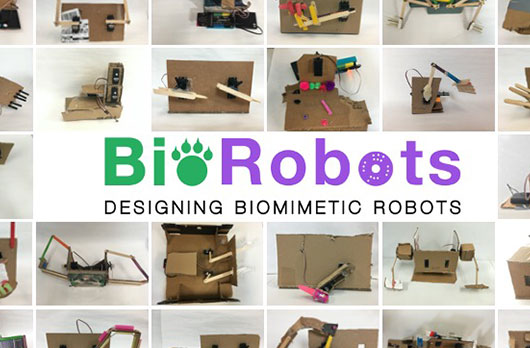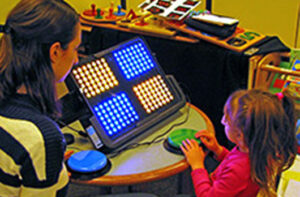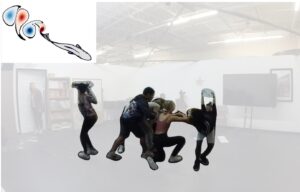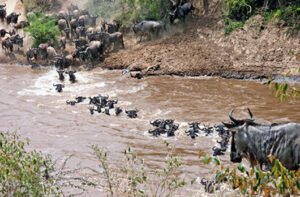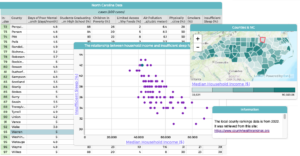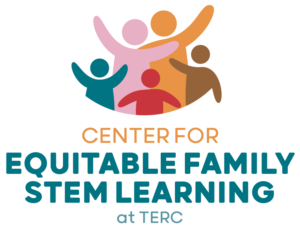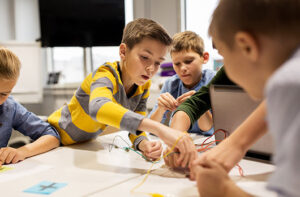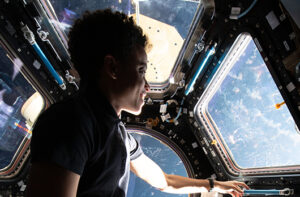Designing Biomimetic Robots
Researched the impact of an interdisciplinary bio-engineering-computational design curriculum on middle school engineering and science education.
Lead Staff:
Debra BernsteinProject Staff:
Gillian PuttickMichael Cassidy
Non-TERC InvestigatorsKristen Wendell, Co-Principal Investigator (Tufts University)
Ethan Danahy, Co-Principal Investigator (Tufts University)
Fay Shaw, Co-Principal Investigator (Tufts University)
SummaryIn most middle schools, learning is segregated by discipline – science is taught in one class, and engineering or computing are taught in another, if at all. Yet today discovery and innovation are interdisciplinary, and students need to use skills and practices from multiple subject areas to solve problems. The Designing Biomimetic Robots project created authentic, interdisciplinary learning experiences for students that are more similar to what is currently happening in the science and engineering fields.
The project developed and studied an education program that integrates science, engineering, and computing by engaging students in biomimicry design challenges. In these challenges, students first study the natural world to learn how animals and plants accomplish different tasks. Then, they engineer a robot that is inspired by what they learned. These design challenges supported students to develop computational thinking, scientific reasoning, and engineering design practices, while allowing them to practice interdisciplinary problem-solving skills. In addition, the project demonstrated how teachers can foster interdisciplinary learning, and can broaden participation in science, engineering and computing among middle school students in diverse settings.
Research ActivityThe project worked with 13 middle school teachers and nearly 400 students in urban and suburban school districts in Massachusetts, Maryland, and Maine that have diverse student demographics. The program included:
- 4-week modular and flexible curriculum that integrated bio-inspired engineering design, robotics, and computer programming content and practices into middle school science, engineering, and STEM classrooms;
- teacher professional development program; and
- web resources to support the integration of biomimetic robotics into middle schools.
Our research activities were guided by question: How does the BioRobots learning environment support student engagement in interdisciplinary learning? Specifically, we wanted to know:
- In what ways does participation in an interdisciplinary biomimetic robotics design challenge support students’…
-
- Engineering and science content and practices?
- Computational thinking practices?
- Understanding of the ways in which computing knowledge and practice aid the pursuit of science and engineering knowledge?
- Self-efficacy?
- How do teachers enact the Designing Biomimetic Robots curriculum? What types of teaching practices support student participation in productive discourse and sense-making?
- How do the design features of the learning environment contribute to student learning, and self-efficacy? In what ways do design features as enacted differ across the different school/district contexts?
ImpactThe goal was for all participating students to develop knowledge, practices, and skills consistent with engineering and science standards, and computational thinking principles, and demonstrate an understanding that computing enhances STEM practice and knowledge development. Our project has engaged science, engineering, and technology teachers in this work. Based on teacher feedback, we have made iterative curriculum revisions to better support teachers in all three disciplines.
We found that curricular revisions and professional development have positioned teachers to deliver unfamiliar content effectively and with confidence. Future research will formally examine this impact. Additionally, data from classroom talk, student-created robotic artifacts, design documentation, and student interviews indicate student learning in all 3 of the integrated disciplines. Students are able to describe the ways in which their robots are and are not biomimetic (i.e., mapping animal structure/function analysis to robot design), provide a rationale for the design choices they made, and describe the iterations in their engineering design process.
We believe that this design-based research project will contribute to our understanding of how to create effective interdisciplinary learning environments. We also hope to contribute to educational research theory about the affordances of interdisciplinary education, and the integration of robotics design tasks into disciplinary classrooms.
PresentationsBernstein, D., Danahy, E., Puttick, G., Cassidy, M., Wendell, K., & Shaw, F. (June, 2019). Designing Biomimetic Robots: An Interdisciplinary Middle School Curriculum. Paper presented at the International Society for Technology in Education (ISTE) Annual Meeting, Philadelphia, PA.
Shaw, F., Wendell, K., Danahy, E., Bernstein, D., Puttick, G., & Cassidy, M. (April, 2019). Designing Biomimetic Robots. In G. Dellavecchia (Chair), Designing for Design: Creating Learning Environments that Support Equitable Engineering in Elementary and Middle School Settings. Symposium conducted at the meeting of the American Educational Research Association, Toronto, ON, Canada.
Bernstein, D., Puttick, G., Cassidy, M., Wendell, K., Danahy, E., & Shaw, F. (April, 2019). Designing Biomimetic Robots to Support Multidisciplinary Engagement in Middle School. Paper presentation at the National Association for Research in Science Teaching, Baltimore, MD.
Show More
Show Less
Bernstein, D., Puttick, G., Wendell, K., Shaw, F., Danahy, E., & Cassidy, M. (August, 2018). Designing Biomimetic Robots in Middle School. Paper presentation at the Connected Learning Summit, Cambridge, MA.
Shaw, F. and Wendell, K. and Puttick, G. and Bernstein, D. and Danahy, E.. “Problem Scoping in Designing Biomimetic Robots,” Proceedings of the International Conference of the Learning Sciences, 2018.
Kristen Wendell, Co-Principal Investigator (Tufts University)
Ethan Danahy, Co-Principal Investigator (Tufts University)
Fay Shaw, Co-Principal Investigator (Tufts University)
In most middle schools, learning is segregated by discipline – science is taught in one class, and engineering or computing are taught in another, if at all. Yet today discovery and innovation are interdisciplinary, and students need to use skills and practices from multiple subject areas to solve problems. The Designing Biomimetic Robots project created authentic, interdisciplinary learning experiences for students that are more similar to what is currently happening in the science and engineering fields.
The project developed and studied an education program that integrates science, engineering, and computing by engaging students in biomimicry design challenges. In these challenges, students first study the natural world to learn how animals and plants accomplish different tasks. Then, they engineer a robot that is inspired by what they learned. These design challenges supported students to develop computational thinking, scientific reasoning, and engineering design practices, while allowing them to practice interdisciplinary problem-solving skills. In addition, the project demonstrated how teachers can foster interdisciplinary learning, and can broaden participation in science, engineering and computing among middle school students in diverse settings.
Research ActivityThe project worked with 13 middle school teachers and nearly 400 students in urban and suburban school districts in Massachusetts, Maryland, and Maine that have diverse student demographics. The program included:
- 4-week modular and flexible curriculum that integrated bio-inspired engineering design, robotics, and computer programming content and practices into middle school science, engineering, and STEM classrooms;
- teacher professional development program; and
- web resources to support the integration of biomimetic robotics into middle schools.
Our research activities were guided by question: How does the BioRobots learning environment support student engagement in interdisciplinary learning? Specifically, we wanted to know:
- In what ways does participation in an interdisciplinary biomimetic robotics design challenge support students’…
-
- Engineering and science content and practices?
- Computational thinking practices?
- Understanding of the ways in which computing knowledge and practice aid the pursuit of science and engineering knowledge?
- Self-efficacy?
- How do teachers enact the Designing Biomimetic Robots curriculum? What types of teaching practices support student participation in productive discourse and sense-making?
- How do the design features of the learning environment contribute to student learning, and self-efficacy? In what ways do design features as enacted differ across the different school/district contexts?
ImpactThe goal was for all participating students to develop knowledge, practices, and skills consistent with engineering and science standards, and computational thinking principles, and demonstrate an understanding that computing enhances STEM practice and knowledge development. Our project has engaged science, engineering, and technology teachers in this work. Based on teacher feedback, we have made iterative curriculum revisions to better support teachers in all three disciplines.
We found that curricular revisions and professional development have positioned teachers to deliver unfamiliar content effectively and with confidence. Future research will formally examine this impact. Additionally, data from classroom talk, student-created robotic artifacts, design documentation, and student interviews indicate student learning in all 3 of the integrated disciplines. Students are able to describe the ways in which their robots are and are not biomimetic (i.e., mapping animal structure/function analysis to robot design), provide a rationale for the design choices they made, and describe the iterations in their engineering design process.
We believe that this design-based research project will contribute to our understanding of how to create effective interdisciplinary learning environments. We also hope to contribute to educational research theory about the affordances of interdisciplinary education, and the integration of robotics design tasks into disciplinary classrooms.
PresentationsBernstein, D., Danahy, E., Puttick, G., Cassidy, M., Wendell, K., & Shaw, F. (June, 2019). Designing Biomimetic Robots: An Interdisciplinary Middle School Curriculum. Paper presented at the International Society for Technology in Education (ISTE) Annual Meeting, Philadelphia, PA.
Shaw, F., Wendell, K., Danahy, E., Bernstein, D., Puttick, G., & Cassidy, M. (April, 2019). Designing Biomimetic Robots. In G. Dellavecchia (Chair), Designing for Design: Creating Learning Environments that Support Equitable Engineering in Elementary and Middle School Settings. Symposium conducted at the meeting of the American Educational Research Association, Toronto, ON, Canada.
Bernstein, D., Puttick, G., Cassidy, M., Wendell, K., Danahy, E., & Shaw, F. (April, 2019). Designing Biomimetic Robots to Support Multidisciplinary Engagement in Middle School. Paper presentation at the National Association for Research in Science Teaching, Baltimore, MD.
Show More
Show Less
Bernstein, D., Puttick, G., Wendell, K., Shaw, F., Danahy, E., & Cassidy, M. (August, 2018). Designing Biomimetic Robots in Middle School. Paper presentation at the Connected Learning Summit, Cambridge, MA.
Shaw, F. and Wendell, K. and Puttick, G. and Bernstein, D. and Danahy, E.. “Problem Scoping in Designing Biomimetic Robots,” Proceedings of the International Conference of the Learning Sciences, 2018.
The project worked with 13 middle school teachers and nearly 400 students in urban and suburban school districts in Massachusetts, Maryland, and Maine that have diverse student demographics. The program included:
- 4-week modular and flexible curriculum that integrated bio-inspired engineering design, robotics, and computer programming content and practices into middle school science, engineering, and STEM classrooms;
- teacher professional development program; and
- web resources to support the integration of biomimetic robotics into middle schools.
Our research activities were guided by question: How does the BioRobots learning environment support student engagement in interdisciplinary learning? Specifically, we wanted to know:
- In what ways does participation in an interdisciplinary biomimetic robotics design challenge support students’…
-
- Engineering and science content and practices?
- Computational thinking practices?
- Understanding of the ways in which computing knowledge and practice aid the pursuit of science and engineering knowledge?
- Self-efficacy?
- How do teachers enact the Designing Biomimetic Robots curriculum? What types of teaching practices support student participation in productive discourse and sense-making?
- How do the design features of the learning environment contribute to student learning, and self-efficacy? In what ways do design features as enacted differ across the different school/district contexts?
The goal was for all participating students to develop knowledge, practices, and skills consistent with engineering and science standards, and computational thinking principles, and demonstrate an understanding that computing enhances STEM practice and knowledge development. Our project has engaged science, engineering, and technology teachers in this work. Based on teacher feedback, we have made iterative curriculum revisions to better support teachers in all three disciplines.
We found that curricular revisions and professional development have positioned teachers to deliver unfamiliar content effectively and with confidence. Future research will formally examine this impact. Additionally, data from classroom talk, student-created robotic artifacts, design documentation, and student interviews indicate student learning in all 3 of the integrated disciplines. Students are able to describe the ways in which their robots are and are not biomimetic (i.e., mapping animal structure/function analysis to robot design), provide a rationale for the design choices they made, and describe the iterations in their engineering design process.
We believe that this design-based research project will contribute to our understanding of how to create effective interdisciplinary learning environments. We also hope to contribute to educational research theory about the affordances of interdisciplinary education, and the integration of robotics design tasks into disciplinary classrooms.
PresentationsBernstein, D., Danahy, E., Puttick, G., Cassidy, M., Wendell, K., & Shaw, F. (June, 2019). Designing Biomimetic Robots: An Interdisciplinary Middle School Curriculum. Paper presented at the International Society for Technology in Education (ISTE) Annual Meeting, Philadelphia, PA.
Shaw, F., Wendell, K., Danahy, E., Bernstein, D., Puttick, G., & Cassidy, M. (April, 2019). Designing Biomimetic Robots. In G. Dellavecchia (Chair), Designing for Design: Creating Learning Environments that Support Equitable Engineering in Elementary and Middle School Settings. Symposium conducted at the meeting of the American Educational Research Association, Toronto, ON, Canada.
Bernstein, D., Puttick, G., Cassidy, M., Wendell, K., Danahy, E., & Shaw, F. (April, 2019). Designing Biomimetic Robots to Support Multidisciplinary Engagement in Middle School. Paper presentation at the National Association for Research in Science Teaching, Baltimore, MD.
Show More
Show Less
Bernstein, D., Puttick, G., Wendell, K., Shaw, F., Danahy, E., & Cassidy, M. (August, 2018). Designing Biomimetic Robots in Middle School. Paper presentation at the Connected Learning Summit, Cambridge, MA.
Shaw, F. and Wendell, K. and Puttick, G. and Bernstein, D. and Danahy, E.. “Problem Scoping in Designing Biomimetic Robots,” Proceedings of the International Conference of the Learning Sciences, 2018.
Bernstein, D., Danahy, E., Puttick, G., Cassidy, M., Wendell, K., & Shaw, F. (June, 2019). Designing Biomimetic Robots: An Interdisciplinary Middle School Curriculum. Paper presented at the International Society for Technology in Education (ISTE) Annual Meeting, Philadelphia, PA.
Shaw, F., Wendell, K., Danahy, E., Bernstein, D., Puttick, G., & Cassidy, M. (April, 2019). Designing Biomimetic Robots. In G. Dellavecchia (Chair), Designing for Design: Creating Learning Environments that Support Equitable Engineering in Elementary and Middle School Settings. Symposium conducted at the meeting of the American Educational Research Association, Toronto, ON, Canada.
Bernstein, D., Puttick, G., Cassidy, M., Wendell, K., Danahy, E., & Shaw, F. (April, 2019). Designing Biomimetic Robots to Support Multidisciplinary Engagement in Middle School. Paper presentation at the National Association for Research in Science Teaching, Baltimore, MD.
Bernstein, D., Puttick, G., Wendell, K., Shaw, F., Danahy, E., & Cassidy, M. (August, 2018). Designing Biomimetic Robots in Middle School. Paper presentation at the Connected Learning Summit, Cambridge, MA.
Shaw, F. and Wendell, K. and Puttick, G. and Bernstein, D. and Danahy, E.. “Problem Scoping in Designing Biomimetic Robots,” Proceedings of the International Conference of the Learning Sciences, 2018.
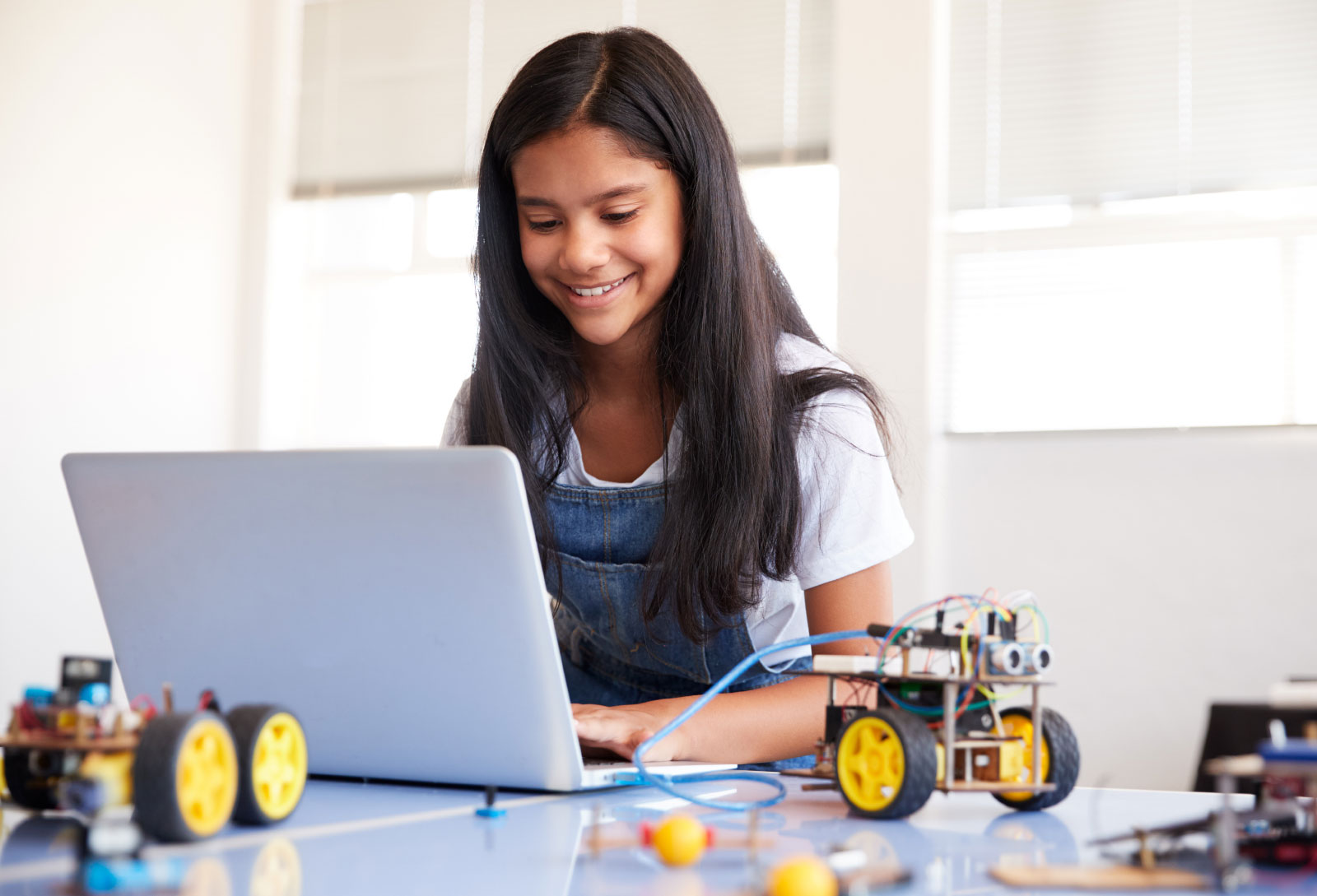
Funder:
National Science Foundation
Award Number:
1742127
Dates:
8/1/17 – 7/31/21
Past ProjectThis project is no longer active. To see a list of current TERC projects, please click here.
Share This Page:
